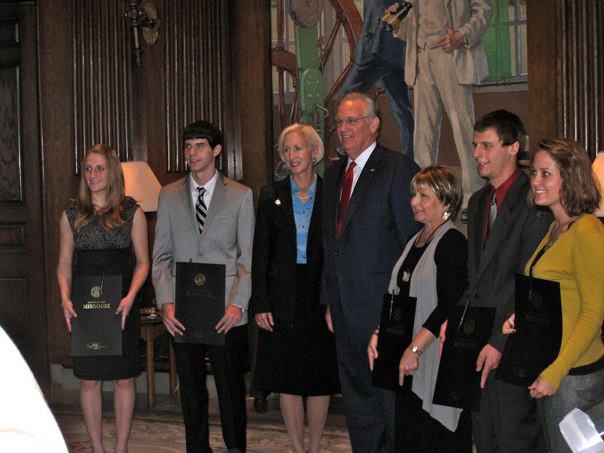
Many people are upset and confused at the death of a public figure, especially an idolized celebrity, and might go as far as committing suicide themselves in response to these mixed feelings. A research report from the November 2007 version of the Journal of Affective Disorders reported that 38.8% of depressive patients were subject to suicidal behaviors and thoughts, and 5.5% attempted suicide after being exposed to a media report of a celebrity suicide.
When the suicide of another individual becomes a partial reason to another person’s suicide, it is known as a “copycat” suicide. A 2009 study from the Research Center for Psychology at the University of London concluded that the media’s portrayal of suicides, especially those of public figures, can have a devastating effect upon the masses, especially upon teenagers, who show a higher copycat suicide rate than other age groups.
There are two types of copycat suicides: point clusters and mass clusters. Point clusters occur when a small community sees a temporary increase in suicide rates, most probably because of a local incident centered in that specific community. Mass clusters, however, happen when an entire community sees a temporary rise in suicide rates. Therefore, high-profile celebrity suicides can be categorized under mass clusters.
Dr. Alex Mesoudi, the researcher who published the study about the media’s effect on suicides, said copycat suicides of high-profile celebrities can be blamed mostly on the media.
“Analyses have shown that national suicide rates rise immediately after the suicides of entertainment celebrities, and to a lesser extent, political figures have been highly publicized in the mass media,” Mesoudi wrote. “The implication here is that this rise is caused by social learning: people across the country imitate the suicide behavior of the celebrity.”
Mesoudi’s study said the rise in suicide rates is proportional to the total amount of attention given to a particular celebrity’s death, including the amount of time the news airs on TV and the amount of space it takes up on a newspaper page.
“Anecdotally … these trends appear to be occurring in many countries in recent years: satellite television and the internet have increased the global range of the mass media; celebrities such as film actors and pop singers are being assigned increasing importance relative to politicians and intellectuals (whose suicides do not elicit copycat suicide attempts); and reality television programs are increasing the number of celebrities within society,” Mesoudi wrote. “This highlights how media guidelines on suicide reporting will become all the more important in the future.”
Mesoudi also pointed out certain people are more likely to commit copycat suicides because they were similar to the victim in gender or nationality. These people might feel closer to the celebrity and might be at a higher risk of committing suicide.
Although Mesoudi’s recent study is the next step in copycat suicide research, some experts like Dr. Deborah Wright, Director of Mental Health at the MU Student Health Center, don’t believe celebrity suicides should be influential enough to cause people to commit a copycat suicide.
“Individuals do not attempt or complete suicides due to grief [of the celebrity’s death],” Wright said. “Individuals who attempt or commit suicide are typically experiencing significant clinical depression and/or other mental health and life stressors.”
The National Institute of Health reports that little research has been done about copycat suicides sparked from celebrity deaths. However, Wright believes that even though copycat suicides don’t occur in mass clusters, people can be at risk for suicide if a peer has just done so recently.
Mesoudi’s study suggests that people are heavily influenced by a celebrity’s death, but Wright points out such depression does not always lead to a copycat suicide. She said many people think about suicide after a peer’s death, and it is a normal stage in the process of grief to have such painful thoughts.
“When I am working with someone who is having thoughts of suicide, I normalize those thoughts as a typical reaction to pain,” Wright said. “When in pain, all of us consider options to reduce our pain. There is a big difference between wanting to ‘be out of pain’ and ‘wanting to be dead’.”
Many people take these suicidal thoughts much more seriously, though, and acquaintances of these people should take action before those individuals decide to take their own life. The subject should never be avoided or talked about in a too subtle way.
“The best advice to anyone who suspects that an individual is thinking about suicide is to talk directly to that individual,” Wright said. “Honest, direct, compassionate discussion is the most helpful way to approach anyone thinking about suicide.”
Although Wright does not believe celebrity suicides can be influential enough to cause copycat suicides, she agrees with Mesoudi that glamorizing such a death will most likely lead to more cases of depression and more suicidal thoughts in point clusters as opposed to mass clusters. She says there are certain things that can be done to avoid cluster suicides though.
“A major aspect of preventing cluster suicides lies in not glamorizing or memorializing the act in any way,” Wright said. “This would include avoiding any of the following: Holding a memorial service for the student at the school, describing in great detail the suicide and dramatizing the impact of suicide through descriptions and pictures of grieving relatives, teachers or classmates.”
Although Mesoudi and Wright disagree on some facts of copycat suicides, partly because of the ongoing research and unknown facts on the subject, the basic idea is clear. The copycat suicide effect is prominent in any community where a death by suicide has hit many people at a personal level. Support must be given to everyone in such a community so copycat suicides do not occur.
“One of the most protective factors against stress is social support,” Wright said. “Therefore, for a high school or college age individual, I would help them engage their friends, trusted teachers and family members when possible.”
Schools approach the subject of suicide supportively as well. RBHS Guidance counselor Jordan Alexander explains that in the event of a student’s suicide, school counselors should be there for students and staff members who need to talk about their feelings. However, students who are more upset need extra help from the school, and there is a procedure that is followed in such a case.
“For students who are more severe in the risk factors, such as a desire to harm themselves with a method and an intent, we do have a protocol that involves contacting parents and having them evaluated by an outside mental health professional,” Alexander said. “They determine whether a hospitalization is appropriate or whether other supports and services are what the student needs.”
Alexander has seen the effects of a peer’s suicide on students in the past. It is not unusual for a loved one of the victim to consider suicide as an option. It is important to convince these students that suicide is not the right decision.
“Unfortunately, there is a slight increase in suicide rates after a completed suicide. Mostly that’s because it gives students an idea of how they may want to cope with their own pain if they see that that was a solution for the [suicide victim]. Obviously we want to talk to those students and let them know that their pain is temporary and their situation will likely resolve,” Alexander said. “Suicide is a permanent solution to a temporary problem.”
By Afsah Khan





















































































Morpheus • Oct 26, 2012 at 3:29 pm
I think that the media has glamorized suicide in general & is capable of it. Do they still do it today? On the whole, I would say, probably not! Although, I think that there is a greater risk of them doing that, than in decades past, what with the internet; I think that there is such a sense of heightened awareness about suicide, in general, and teen-suicide, specifically that, on the whole, the media is much more respectful than it has been in the past, especially before the internet existed and/or before the internet became the juggernaut that it is today.
It should be definitively understood that the media is not every a—- who has a blog! The term “media” represents the professionals in that industry, not just any, or every, jerk out there who can broadcast his thoughts on a website, including doing that in terms of audio…
Anna Wright • Sep 13, 2012 at 9:08 am
This is a really interesting story… I think the media definitely makes the aftermath of celebrity suicides appear a bit too “glamorous”.